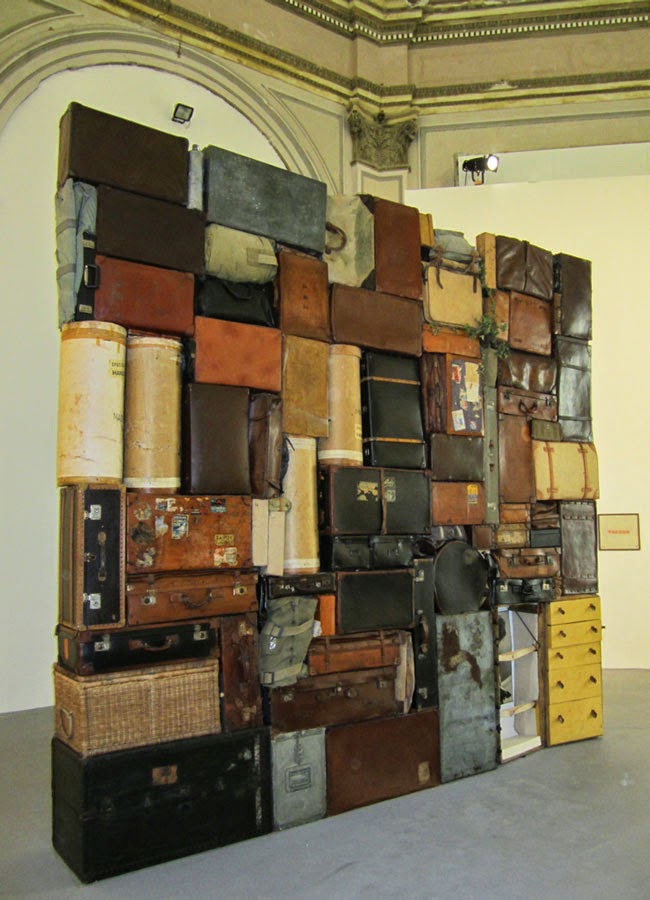 |
| Il Muro Occidentale o del Pianto (The Western Wall or the Wailing Wall) by Fabio Mauri |
Although the title of the 2015 Venice Biennale is "All the World's Futures," most of the artwork concerns the past. One of the first works a visitor sees in the Central Pavilion is this monumental sculpture constructed from old-fashioned suitcases, trunks, and traveling bags. Ironically positioned to welcome visitors, it speaks of departure, dislocation, abandonment and extinction. Each scuffed and worn bag conveys a sense of individual history, of personality and character. Together they tell the story of a group -- a neighborhood, an ethnic enclave, an extended family -- huddled together, forced to move, carrying whatever they could manage, leaving much behind.
Fabio Mauri (1926-2009) created this work in 1993 as a memorial to the victims of the Nazi holocaust and to all people forced to embark on "journeys without return," as the exhibition catalog puts it. Mauri's father was in the newspaper business; as a teenager, at the end of the war, he was exposed to reports in many different papers documenting the concentration camps, including photographs of the victims. The event and images horrified him so much that he suffered a nervous breakdown. By the early 1950s he had recovered and became an artist, taking the holocaust as a central theme:
"In a career that lasted half a century, Mr. Mauri, who died in 2009, produced work after work that probed the problem that had unhinged him as a boy: How could such atrocities happen under everyone’s eyes in Europe? In drawings, sculptures, performances and installations, he explored the ways in which mass media and public spectacle can mask and warp the world." Arthur Lubow, The New York TimesIn the right hand corner of the sculpture there is an open trunk with a poster pinned up inside -- forming a window onto Mauri's own career. This is a poster des "Ebrea" ("Jewess"), a film that Mauri made in 1971. The film shows a naked woman standing in front of a mirror, cutting off clumps of her hair and pasting it onto the surface of the glass to form a Jewish star obscuring her reflection. This mysterious imagery becomes painful when we think of the piles of human hair found in the camps, shaved off on the way to the gas chamber.
The exhibition curator Okwul Enwezor says about his exhibition:
"At the core of the project is the notion of the exhibition as a stage, where historical and counterhistorical projects will be explored. These projects, works and voices, like an orchestra, will occupy the spaces of the Biennale and pre-occupy the time and thinking of the public." Okwul Enwezor, Exhibition CatalogueIt is unfortunate that it has become a cliche to say those that do not understand history are doomed to repeat it, because it is urgently true. This exhibition seeks to help us understand history, so that we may make different choices.
More:
Fabio Mauri Works, Fueled by Trauma, Head to the Venice Biennale, Arthur Lubow, The New York Times


No comments:
Post a Comment
Thank you for your comment! It may take a day or two for it to appear on the blog.